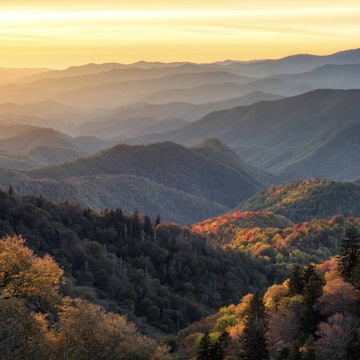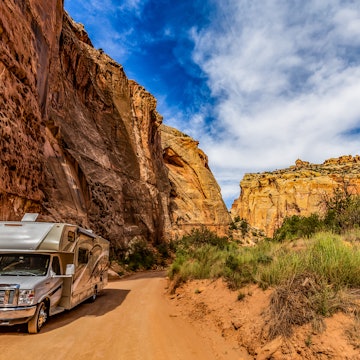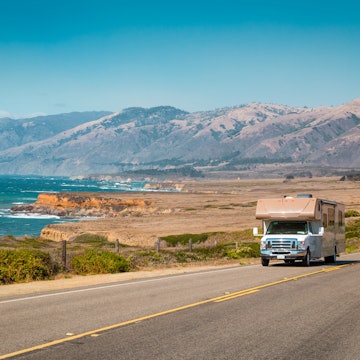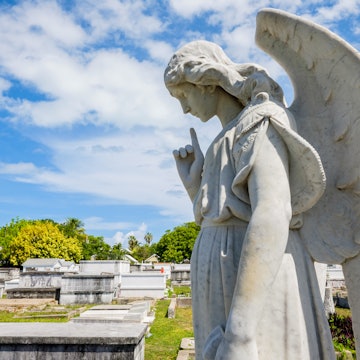

Maybe the best decision I’ve ever made in my life was to go along with a bunch of friends on a two-week, 3000-mile motorcycle trip from Portland, Oregon, to Knoxville, Tennessee, on tiny vintage bikes and shoestring budgets. We took the smallest roads through the smallest towns, camping most of the way, and saw the country from a totally unexpected angle.
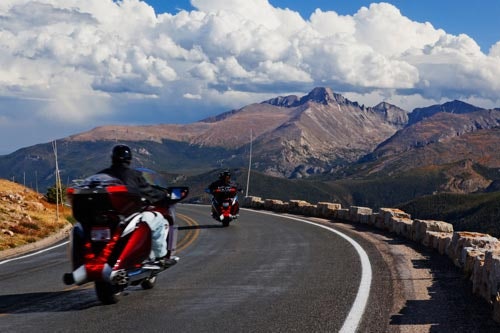
Nothing was planned; we found each night’s campsite mostly by depending on the kindness of strangers. Once we stayed on the grounds of a long-abandoned school in Idaho, suggested by someone we met at a convenience store. Another time we slept beside a boat in an overcrowded campsite, thanks to a generous family with incredible Southern accents.
In short, it was an adventure. I learned a lot on that trip about how to enjoy a long-haul motorcycle ride; chiefly that it is a fantastic, unparalleled way to travel.
How to get a bike
If you don’t have your own bike, it’s easy to hire one. The model depends on the kind of riding you're planning to do: on big open highways, you might want a cruiser; for twisty roads, a nimbler sportbike; for gravel and dirt, a dual-sport. Cost for rental runs at about US$100-$180 a day, plus extra fees for insurance, luggage and helmets (a must - legally required in many states but really just good sense).
Be sure the rental company understands your skill level and where you're planning to go - it's no fun struggling with a bike you can't handle or one that's wrong for the terrain. Search the internet for bike-rental companies near the starting point of your route; a few companies, like Eagle Rider (www.eaglerider.com), have outlets all over the US. (The brave or mechanically inclined might consider searching Craigslist (www.craigslist.com) for cheap used bikes in the area.)
What to pack
You can cram a surprising amount of stuff onto a bike, but consider that you’ll be unpacking and repacking all of it every day for the whole trip. Stick to the minimum. If you have bike-specific luggage, great; if not, use a drybag and straps or bungee cords. Make sure nothing is flapping; once you’ve gone a few miles, stop and check that everything’s secure.
Things you’ll definitely want to bring: good maps, warm clothes, water, snacks, rain gear, sunglasses, sunscreen, earplugs, phone and charger, extra socks and undies, flashlight or camping headlamp, matches, aspirin, toiletries, camping gear if you’re camping (don’t forget bug spray!).
Optional extras: hot-weather clothes, comfy shoes, gas-can, basic tools, extra bungee cords, tyre-repair kit, toilet paper, disposable face-cleaning cloths for wiping off road grime, a handkerchief that can keep wind and bugs out of your neck or be wetted to cool you down.
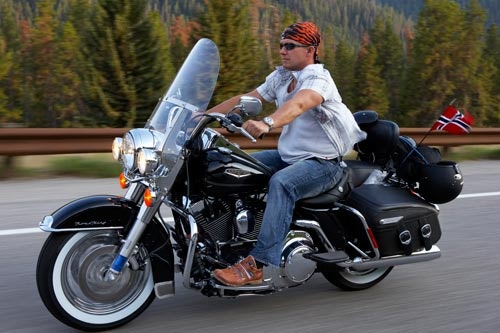
Where to stay
Camping means extra gear, but it allows greater flexibility in terms of your route and schedule, let alone budget; you can stop anywhere you find a pretty spot, set up your tent and be back on the road the next morning at sunrise. Locals at gas stations and cafes are great sources of information about cheap or free camping spots, firewood, etc. Motels are a good option too, as most well-known motorcycle routes go through smaller towns where rooms are inexpensive and rarely booked up. I like to alternate; a shower and warm bed every few days makes a huge difference in morale.
Tips for making it a great ride
A positive attitude is key, but it's easier to have one when you're warm, dry, well-rested, fuelled up, not lost, and above all not riding beyond your skill level. Check the terrain of where you're going before you head out; ask locals about road conditions. Very often someone could've told you that 10 miles up the road is a washout you can’t cross, sparing you a 20-mile detour. In small towns, carry cash; some gas stations don't take cards, and these are always the only gas station for 100 miles.
Establish plans with everyone in your group about what to do if (when) you get separated. Know where to meet and when, so if someone doesn't turn up, you can look for them. It's helpful to have at least one mechanic along. In most groups, there will be a range of skill levels; it's important not to let slower riders feel rushed, or they may take unnecessary risks. For the same reason, it's wise to designate the day's rendez-vous stops in the morning so no one falls too far behind. Cell-phones have made all of this easier, but in many out-of-the-way areas there won’t be phone service, so it’s best not to rely on them.
Speaking of your riding partners, choose them wisely: they should be people you’ll still like when you’re hopelessly lost, freezing, overheated, sitting at breakfast with helmet hair, peeing in the woods, broken down on the side of the road, etc. (If you even think you might have to pee and there's a clean restroom at the gas station, always use it. They are few and far between.)
Dangers and annoyances
Dangers: crashing, which is usually a matter of trying to ride beyond your experience level; mechanical breakdowns; bad weather; running out of fuel; deer and wildlife on the road at dusk and after dark.
Annoyances: unpacking all your gear every night and repacking it in the morning; sore butt; bad weather; having to go back to work when the ride is over.

Itineraries
There are as many great rides in the US as there are small roads, but a few stand out:
In Oregon, the 250-mile route from Maupin (just east of Mt Hood, 100 miles from Portland) along Bakeoven Road and to the old mining town of Sumpter is phenomenal. It goes through the ghost towns Shaniko and Antelope, then the futuristic moonscape of the John Day Fossil Beds and the town of Fossil, on to lonely, remote Long Creek (basically just a gas station and hamburger stand), and through the Umatilla National Forest into Sumpter. While here, don’t miss the chance to see the historic Sumpter Valley Gold Dredge.
Another road worth seeking out is US Route 129, which starts in Knoxville, Tennessee, and continues into Florida. The famous section is Deals Gap, whose 11-mile stretch nicknamed 'The Dragon' has 318 curves, many of which have been named (like 'Gravity Cavity'). The road borders the Great Smokey Mountains National Park; it’s legendary in places and verifiably good from Knoxville through North Carolina.
One of the greatest roads of all time is California’s Highway 1, along the Pacific Coast. The tricky curves and rollercoaster highs and lows are thrilling enough even without the fantastic ocean views. Starting in Leggett in the Redwood Forest (don’t neglect to visit the drive-through tree park), the full route runs about 700 miles south to Dana Point near Laguna Beach and includes more worthwhile sites and attractions than it’s possible to list here. (Caveat: there’s heavy traffic on some sections.)
Still, the main thing I learned on that trip to Tennessee is that it hardly matters where you go - the main thing, as with all travel, is how you get there.

Revved up for a two-wheeled adventure, stateside? Chuck a copy of Lonely Planet's USA's Best Trips in the drybag.












